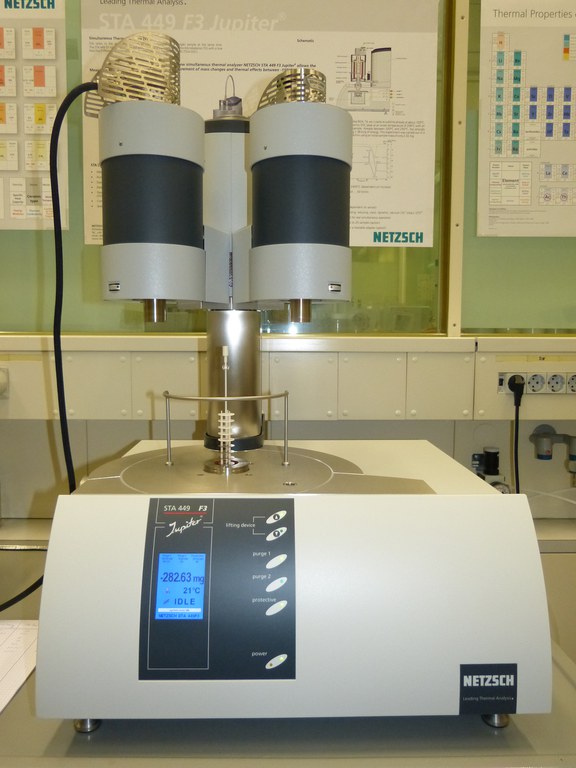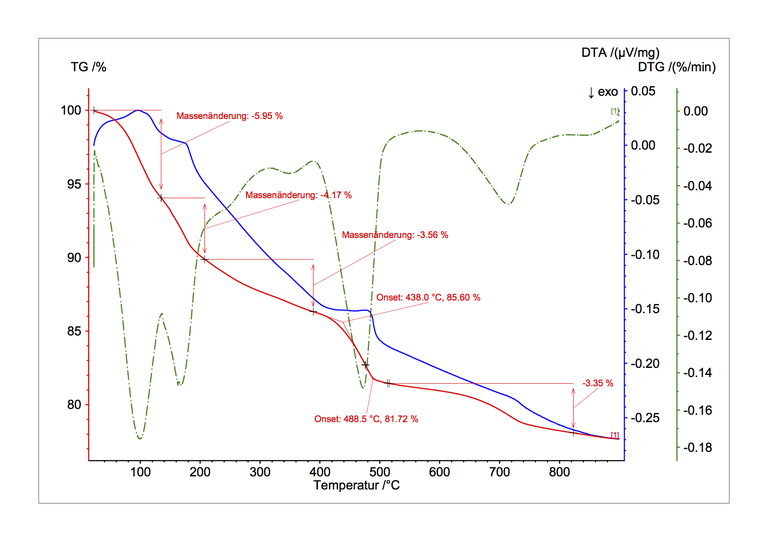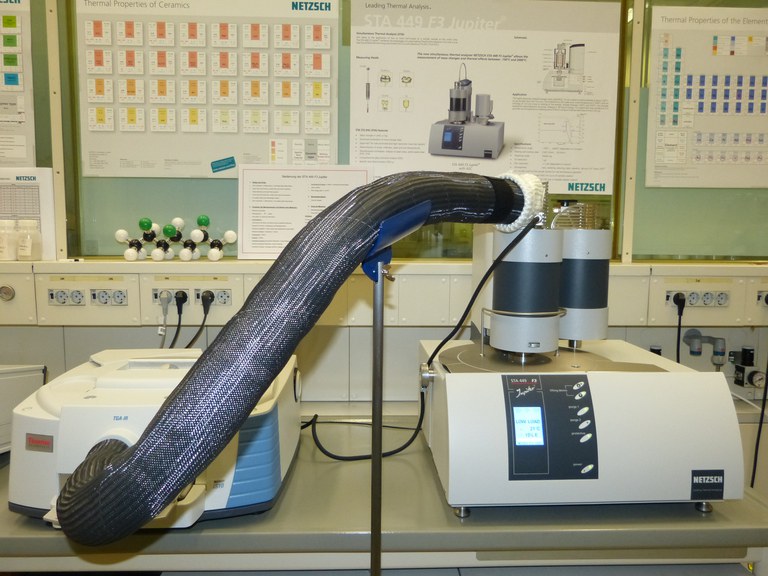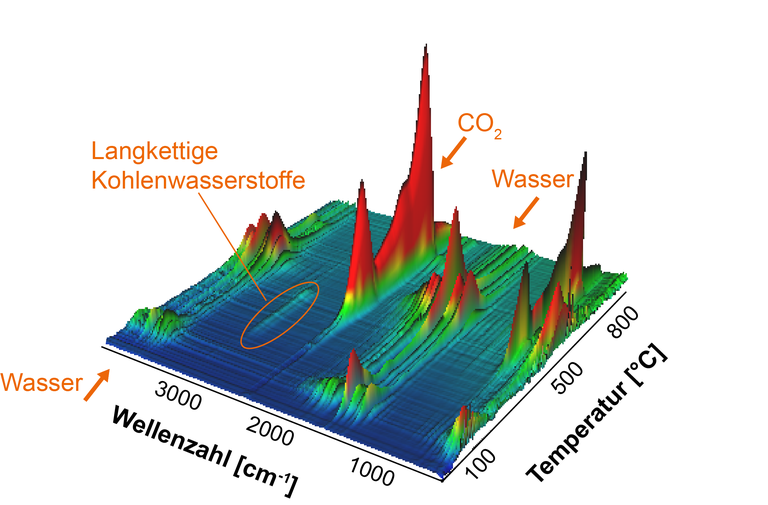Thermogravimetric analysis and differential thermal analysis (TGA-DTA)
While a substance is heated slowly on a sample holder its changes in weight and enthalpy (heat absorption or release) are registered. The method is also referred to as simultaneous thermal analysis (STA) and can be applied to any material undergoing a reaction in the temperature range from 20 to 1600 °C.
Observing the substances which are either released during the temperature rise (e.g. water of crystallization) or are absorbed (e.g. oxygen) as well as emerging structural modifications yield an insight into the reaction mechanisms and permit the quantitative determination of the permuted substances. Main fields of application are the investigation of mineral materials (e.g dehydroxilation of clays or formation of clinker phases in cement raw meal) and the characterization of plastics. Complex mixed substances are difficult to interpret since several processes may superimpose each other.

Figure: Simultaneous thermal analysis - Netzsch STA 449 F3 Jupiter
 Figure: Temperature-dependent release of water permits the investigation of the cement hydration
Figure: Temperature-dependent release of water permits the investigation of the cement hydration
TGA-IR-coupling
Simultaneous thermal analysis (STA) does not always provide clear conclusions about which substance is causing a specific change in weight and enthalpy. This holds especially in case of complex mixed substances. Here, an analysis of the gases released during the STA-measurement is necessary and can be accomplished by coupling the STA with the FT-IR-spectrometer.

Figure: Nicolet iS10 FT-IR spectrometer coupled with TGA-IR gas cell coupled with transfer line to the STA 449 F3 Jupiter
The coupled system is suitable for the identification of carbon carriers (e.g. petroleum) in mineral construction materials and for analyzing polymers.

Figure: Thermal analysis coupled with FT-IR-spectroscopy